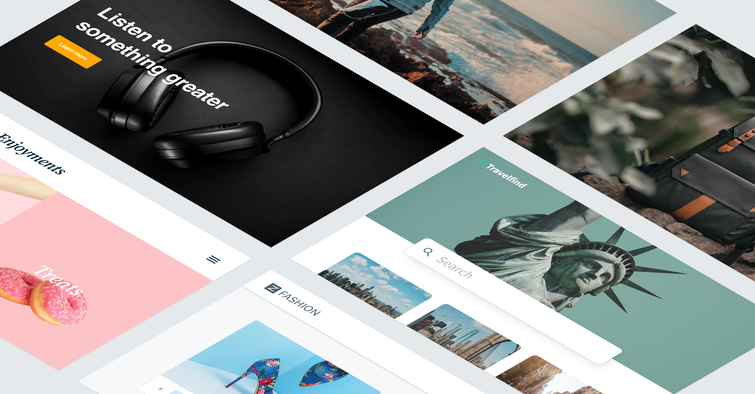Partner Content

"If opportunity doesn't knock, build a door." — Some guy on the internet when I googled inspirational quotes. But if you're currently putting a door-building project out to tender, I'd suggest going back to the drawing board.
What on earth is a 'digital experience'?
Waiting for a physical embodiment of the word 'opportunity' to walk up and knock on your door sounds like my idea of nightmare fuel. And while I'm sure an alphabetical version of a George A Romero zombie shuffling up your driveway could be pretty intriguing, it's not going to stop and explain how it can help improve digital experiences for your customers. But I am!
When you read the phrase 'digital experiences', what comes to mind? If you're struggling to imagine, let me help you out. Digital experiences can be defined as any interaction between a business and a (potential) customer that's been made possible through digital technology. In short: interacting with a brand through your smartphone or computer. Whether that's encountering a brand's YouTube ad before you watch clips of talking dogs or scrolling through the optional extras, you don't need to add to your pizza order (but do anyway).
Online relationship building
Digital experiences are the touchpoints that bring you and your customer closer together. It's a vital part of building a relationship with both your existing customers (and often, more importantly) potential ones. For many brands already, they're leveraging the most out of their marketing output thanks to a hard-working, creative team, with talented marketers driving traffic to brand web pages. So what's the problem?
99 problems (well, more like three)
In short — web pages that run slower than my nose does, images that barely render and look awful, and marketers wasting precious time doing the mundane, manual tasks that should be piled onto the intern.
When web pages run slow, people click off them. Think about the last time you had to wait longer than 2 seconds for a web page to load. What did you do? I bet it wasn't 'wait patiently whilst image by image the page loads.' It was probably more like 'click away and swear never to visit that website ever again.' Your customers are no different - if your brand's page doesn't load in under 2 seconds, but your competitor’s site does, you're going to have an uphill battle to win the fight for customer loyalty. An 80% bounce rate isn't pretty.
Image quality is a big issue too. Whilst we all aren't rocking 40" UHD 4K monitors (though my Christmas list certainly is), most modern smartphones are capable of rendering beautiful content — and far too many brands get caught out with potato quality product imagery or banners. Nobody wants to spend precious cash with a brand that can't even showcase its product correctly. Whether the aspect ratio is off, the cropping is poor, or the resolution absolutely heretical, ugly images belong firmly in the category of 'How to disappoint your customers.'
Please spare a thought for those poor marketers who get lumped with having to resize every image in their bulging asset library. Want to use that fabulous headshot of your CEO for a web banner? Better resize it. How about for the header of a 'letter from the CEO' content piece? Better resize it. How about for literally anything on the website? Better resize it. Image resizing takes forever, and marketers don't have forever — though their workloads often suggest otherwise. Manual tasks like image resizing and managing assets can eat into an already stacked schedule.
So how can we get rid of all of these problems, and streamline the digital experiences of customers to be as slick, usable, and actionable as possible?
Your digital ecosystem's new best friend: Dynamic Asset Transformation (DAT).
Imagine a world where marketers are liberated from the chains of mundane, manual tasks. Where customers can enjoy fast-loading web pages filled with beautiful content that doesn't look like it's been imported off a floppy disk. Imagine no more — Dynamic Asset Transformation is a reality that your brand can start leveraging right now.
Using the single source of truth within your existing DAM solution, DAT pulls image data from an existing asset and optimizes it for display on your web pages — without altering the original file. What's more, it's fully automated! The days of clambering around trying to work out what size image you need for different placements is firmly in the past — all thanks to DAT's intuitive, atomized workflow.
Images optimized by DAT speed up web pages by using less data, as they're already cooked to the right size for the task at hand. When Google scrapes web pages for algorithm data, optimized images are treated like a Frappuccino (moreish and totally irresistible, if you're me anyway). What I'm trying to say is Google LOVES well-optimized web pages, and the adoration of everyone's favourite search engine is very good news for your search result ranking against competitors.
Slow web pages are about to be karate-chopped by a DAM x DAT tag team that thrives off enabling marketers and creatives to do what they love best. And that isn't manually resizing everything — it's creating original, exciting content.
